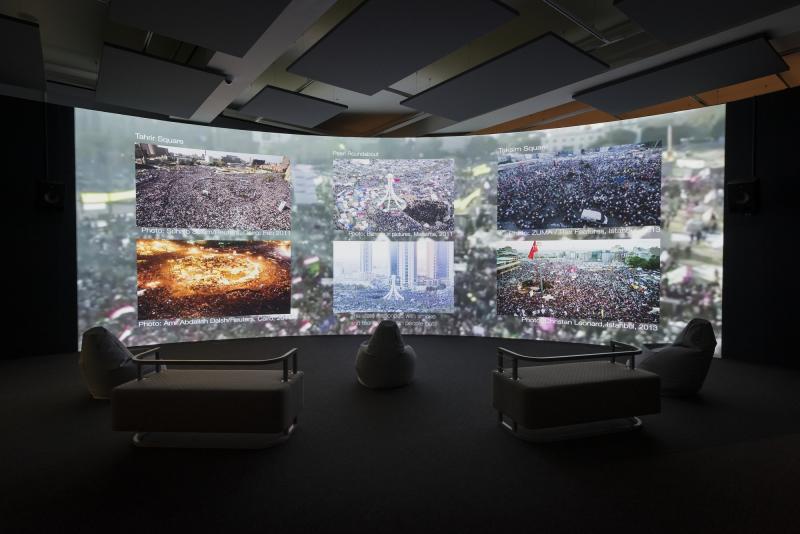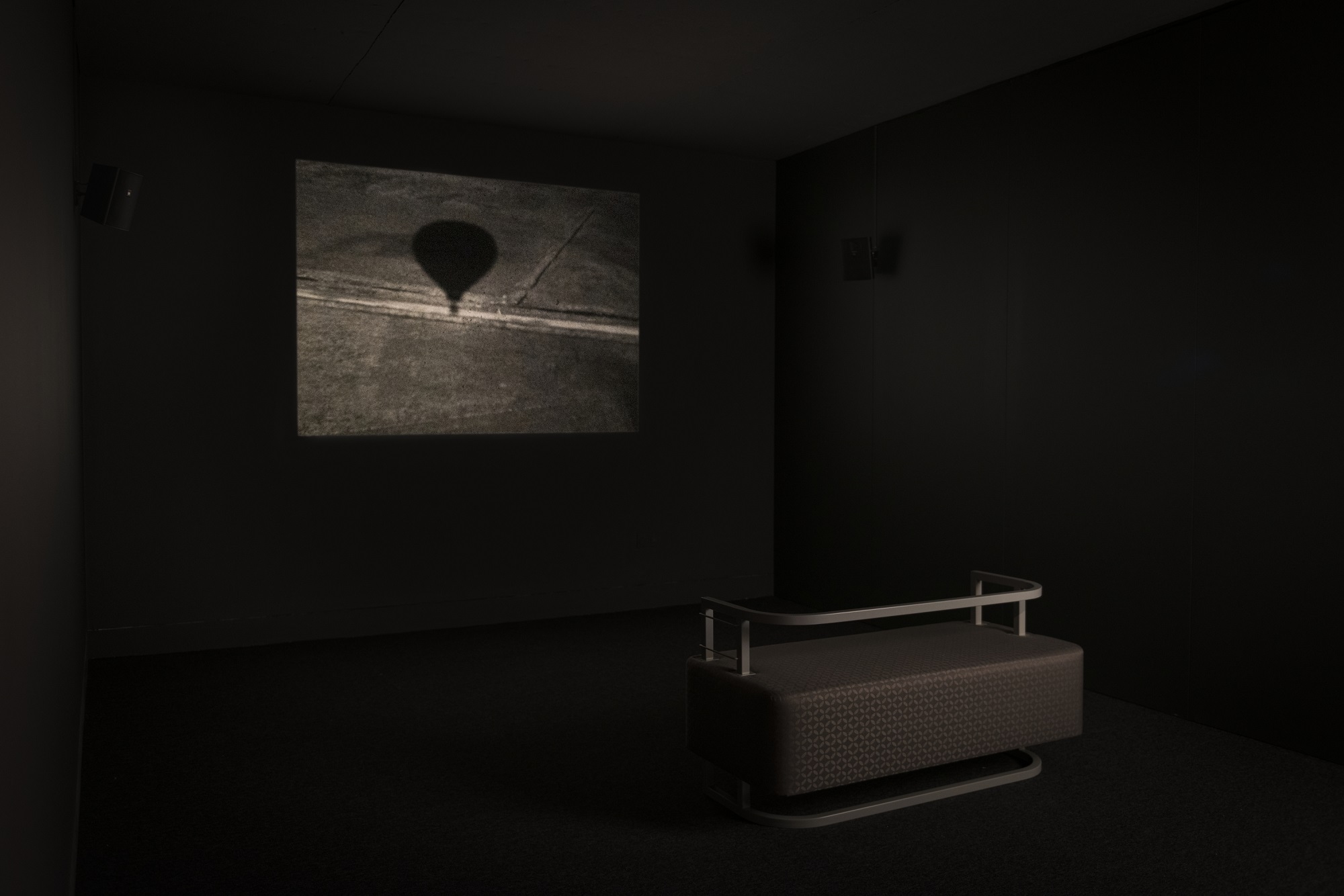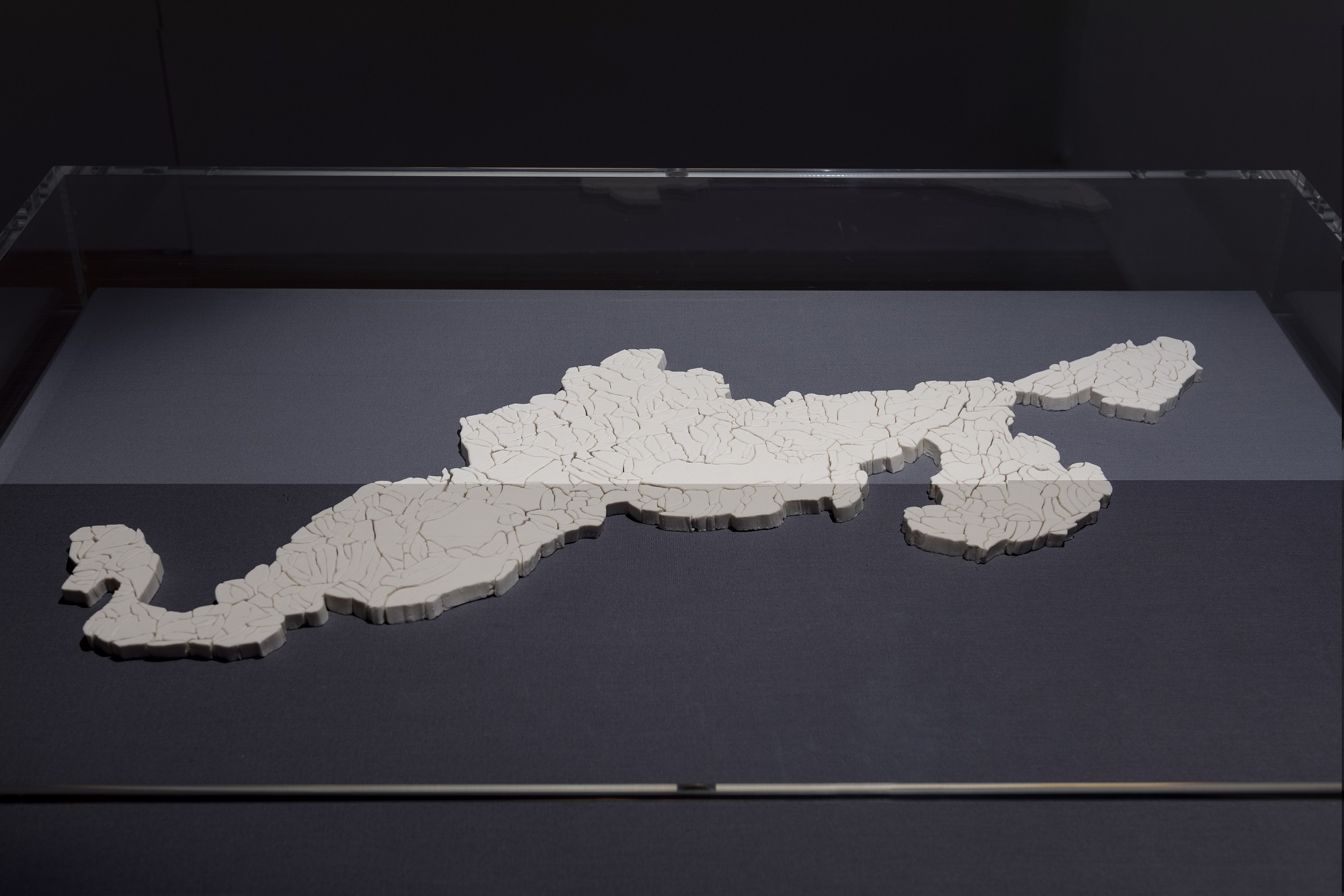In the Air, Wellcome Collection review - art in an emergency | reviews, news & interviews
In the Air, Wellcome Collection review - art in an emergency
In the Air, Wellcome Collection review - art in an emergency
History, politics and poetry abound in a show offering inspiration and agitation

Air is a weighty subject, and in both senses; if we did not contain its gases in our bodies, the air would crush us. Ninety-nine per cent of the world’s population breathe polluted air daily. There was a time on this planet, 3.5 billion years ago, before oxygen. Startling facts like these are perhaps to be expected from an exhibition at the scientific Wellcome Collection.
Early in the show we find a suggestion that a bag of cloud collected at dawn, in spring, from a hot air balloon might have healing properties. The notion is as untimely as the medium, a 16mm film which is the hallmark of Tacita Dean (pictured below: A Bag of Air, 1995, Tacita Dean). She relates this flight of fancy via a succinct poetic script and grainy footage from the gondola of a balloon clearly high above the French countryside.
 Irene Kopelman has attempted to paint the micro organisms that photosynthesise in our seas. This is a gesture as whimsical as Dean’s aerial voyage. Too small and quick to study, they defy watercolour treatment. She also sculpts an alpine glacier out of porcelain, cracked into as many pieces as a jigsaw (pictured below).
Irene Kopelman has attempted to paint the micro organisms that photosynthesise in our seas. This is a gesture as whimsical as Dean’s aerial voyage. Too small and quick to study, they defy watercolour treatment. She also sculpts an alpine glacier out of porcelain, cracked into as many pieces as a jigsaw (pictured below).
The concern is real: the oceans are turning too acidic to support phyto-plankton; the glacier is melting. This is slow work for an urgent crisis. It may be interesting to learn that precambrian stromatolites were the first entities to pump out oxygen, and to be able to consider these other-worldly nodular forms, but the next stage of the show is more immediate.
 Pollution is made more visible here with a deeply saddening film about the first person in Britain to be given "air pollution" as cause of death. Ella Adoo-Kissi-Debrah was just nine when an asthma attack took her life. Black and Brown Films tell the story; Choked Up pursue the campaign initiated by Ella’s mother. The UK government records the death of between 28,000 and 36,000 people each year as linked to poor air quality. Such pollution is more likely to affect the poor and people of colour.
Pollution is made more visible here with a deeply saddening film about the first person in Britain to be given "air pollution" as cause of death. Ella Adoo-Kissi-Debrah was just nine when an asthma attack took her life. Black and Brown Films tell the story; Choked Up pursue the campaign initiated by Ella’s mother. The UK government records the death of between 28,000 and 36,000 people each year as linked to poor air quality. Such pollution is more likely to affect the poor and people of colour.
Work from more campaigners can be found in several vitrines containing published material from the British Society for Social Responsibility in Science. The BSSRS was a prolific movement which emerged from the late 1960s when concern about chemical weapons was sharpened by use of Agent Orange in Vietnam, and later use of CS gas in Northern Ireland. Comprised of a panel of scientists, this pressure group is represented by no less than three different journals and magazines: Science for People, Consernus and Hazards Bulletin. Curators Emily Sargent and George Vasey have drawn upon an archive full of authoritative protest material against the militarisation of science.
The work of the BSSRS nicely tees up part three of the show, a 25-minute film installation by Forensic Architecture. These incisive researchers highlight more environmental racism in a host of global locations. They compile a dark periodic table of poisonous gasses, from white phosphorous bombings in Gaza to the carbon monoxide released by the ecocidal burning of Indonesian forests. The resulting film, Cloud Studies (main picture), brings home how lethal the air can be and how aggression can be carried on a breeze.
The film speaks so eloquently for itself, the controversy about a supporting pro-Palestinian statement, which appeared alongside its display at Manchester International Festival last year, was surely a little inflated, to use another airy metaphor.
For good or ill, the air has no borders, as demonstrated by David Rickard in the show’s final piece: a glass container filled with air from each of the 27 countries who signed the 1919 Paris Convention to make their national boundaries fully vertical. And yet, with each intake of breath we are inhaling the previous contents of eight billion other lungs. Exhale, and your breath can circle the globe in just two weeks.
For me, this show is strongest when it takes a direct approach. Algae connects to geopolitics, through climate change and pollution. It is not however as newsworthy as the numerous campaigns for better air which are so ably engaged with. Visual poetry sets the stage here for a show which inspires you to consider the element within and without us. But politics are predominantly "in the air" at Wellcome Collection right now.
rating
Explore topics
Share this article
Subscribe to theartsdesk.com
Thank you for continuing to read our work on theartsdesk.com. For unlimited access to every article in its entirety, including our archive of more than 15,000 pieces, we're asking for £5 per month or £40 per year. We feel it's a very good deal, and hope you do too.
To take a subscription now simply click here.
And if you're looking for that extra gift for a friend or family member, why not treat them to a theartsdesk.com gift subscription?
more Visual arts
 Lygia Clark: The I and the You, Sonia Boyce: An Awkward Relation, Whitechapel Gallery review - breaking boundaries
Two artists, 50 years apart, invite audience participation
Lygia Clark: The I and the You, Sonia Boyce: An Awkward Relation, Whitechapel Gallery review - breaking boundaries
Two artists, 50 years apart, invite audience participation
 Mike Kelley: Ghost and Spirit, Tate Modern review - adolescent angst indefinitely extended
The artist who refused to grow up
Mike Kelley: Ghost and Spirit, Tate Modern review - adolescent angst indefinitely extended
The artist who refused to grow up
 Monet and London, Courtauld Gallery review - utterly sublime smog
Never has pollution looked so compellingly beautiful
Monet and London, Courtauld Gallery review - utterly sublime smog
Never has pollution looked so compellingly beautiful
 Michael Craig-Martin, Royal Academy review - from clever conceptual art to digital decor
A career in art that starts high and ends low
Michael Craig-Martin, Royal Academy review - from clever conceptual art to digital decor
A career in art that starts high and ends low
 Van Gogh: Poets & Lovers, National Gallery review - passions translated into paint
Turmoil made manifest
Van Gogh: Poets & Lovers, National Gallery review - passions translated into paint
Turmoil made manifest
 Peter Kennard: Archive of Dissent, Whitechapel Gallery review - photomontages sizzling with rage
Fifty years of political protest by a master craftsman
Peter Kennard: Archive of Dissent, Whitechapel Gallery review - photomontages sizzling with rage
Fifty years of political protest by a master craftsman
 Dominique White: Deadweight, Whitechapel Gallery review - sculptures that seem freighted with history
Dunked in the sea to give them a patina of age, sculptures that feel timeless
Dominique White: Deadweight, Whitechapel Gallery review - sculptures that seem freighted with history
Dunked in the sea to give them a patina of age, sculptures that feel timeless
 Bill Viola (1951-2024) - a personal tribute
Video art and the transcendent
Bill Viola (1951-2024) - a personal tribute
Video art and the transcendent
 In the Eye of the Storm: Modernism in Ukraine 1900-1930s, Royal Academy review - famous avant-garde Russian artists who weren't Russian after all
A glimpse of important Ukrainian artists
In the Eye of the Storm: Modernism in Ukraine 1900-1930s, Royal Academy review - famous avant-garde Russian artists who weren't Russian after all
A glimpse of important Ukrainian artists
 Francis Alÿs: Ricochets, Barbican review - fun for the kids, yet I was moved to tears
How to be serious and light hearted at the same time
Francis Alÿs: Ricochets, Barbican review - fun for the kids, yet I was moved to tears
How to be serious and light hearted at the same time
 Gavin Jantjes: To Be Free, Whitechapel Gallery review - a sweet and sour response to horrific circumstances
Seething anger is cradled within beautiful images
Gavin Jantjes: To Be Free, Whitechapel Gallery review - a sweet and sour response to horrific circumstances
Seething anger is cradled within beautiful images

Add comment